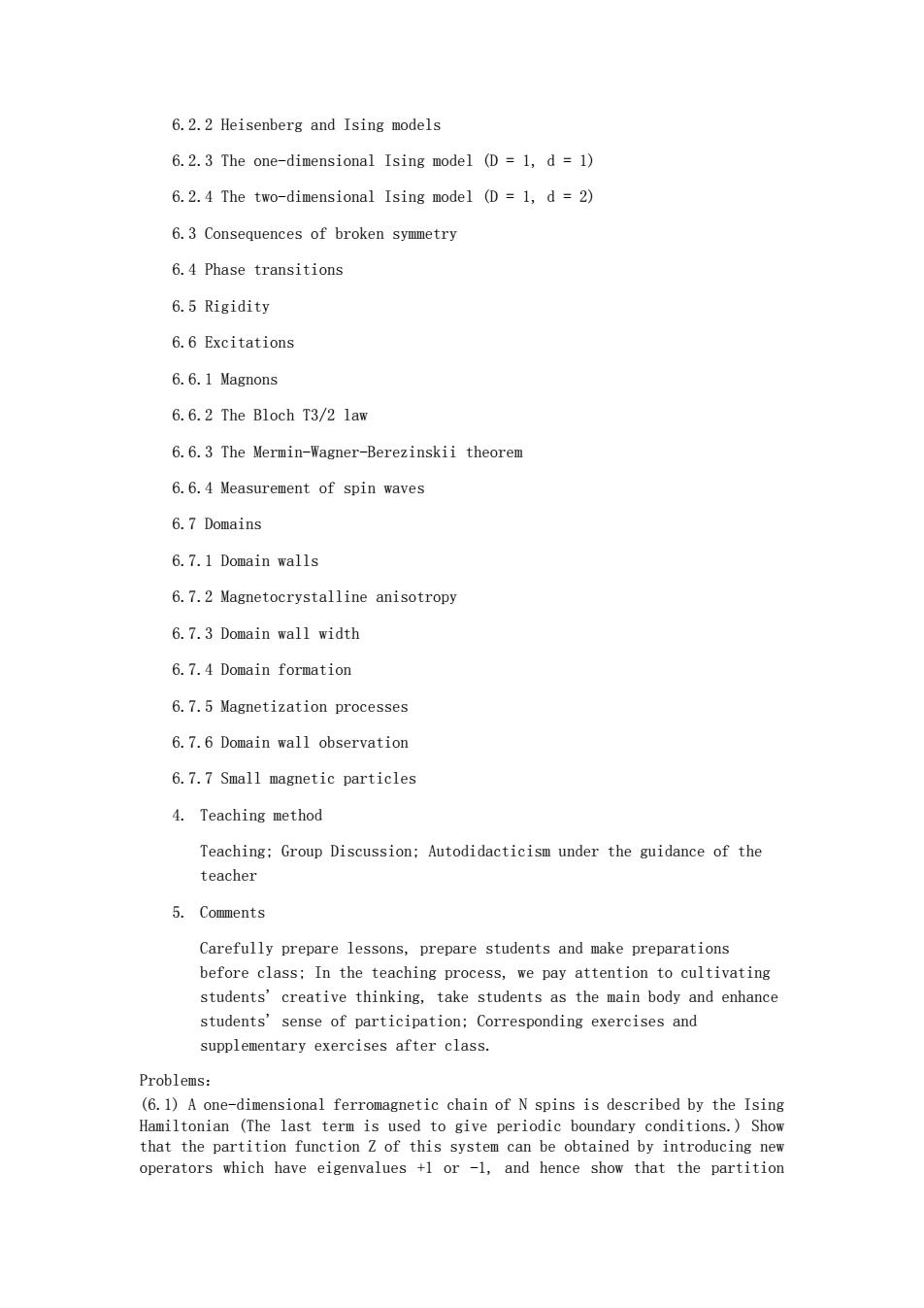正在加载图片...

6.2.2 Heisenberg and Ising models 6.2.3 The one-dimensional Ising model (D=1.d=1) 6.2.4 The two-dimensional Ising model (D=1,d=2) 6.3 Consequences of broken symmetry 6.4 Phase transitions 6.5 Rigidity 6.6Excitations 6.6.1 Magnons 6.6.2 The Bloch T3/2 law 6.6.3 The Mermin-Wagner-Berezinskii theorem 6.6.4 Measurement of spin waves 6.7 Domains 6.7.1 Domain walls 6.7.2 Magnetocrystalline anisotropy 6.7.3 Domain wall width 6.7.4 Domain formation 6.7.5 Magnetization processes 6.7.6 Domain wall observation 6.7.7 Small magnetic particles 4.Teaching method Teaching:Group Discussion:Autodidacticism under the guidance of the teacher 5.Comments Carefully prepare lessons,prepare students and make preparations before class:In the teaching process,we pay attention to cultivating students'creative thinking,take students as the main body and enhance students'sense of participation;Corresponding exercises and supplementary exercises after class. Problems (6.1DA e-d the Ising that the tion funct 7 of this p n he ichoythe6.2.2 Heisenberg and Ising models 6.2.3 The one-dimensional Ising model (D = 1, d = 1) 6.2.4 The two-dimensional Ising model (D = 1, d = 2) 6.3 Consequences of broken symmetry 6.4 Phase transitions 6.5 Rigidity 6.6 Excitations 6.6.1 Magnons 6.6.2 The Bloch T3/2 law 6.6.3 The Mermin-Wagner-Berezinskii theorem 6.6.4 Measurement of spin waves 6.7 Domains 6.7.1 Domain walls 6.7.2 Magnetocrystalline anisotropy 6.7.3 Domain wall width 6.7.4 Domain formation 6.7.5 Magnetization processes 6.7.6 Domain wall observation 6.7.7 Small magnetic particles 4. Teaching method Teaching; Group Discussion; Autodidacticism under the guidance of the teacher 5. Comments Carefully prepare lessons, prepare students and make preparations before class; In the teaching process, we pay attention to cultivating students' creative thinking, take students as the main body and enhance students' sense of participation; Corresponding exercises and supplementary exercises after class. Problems: (6.1) A one-dimensional ferromagnetic chain of N spins is described by the Ising Hamiltonian (The last term is used to give periodic boundary conditions.) Show that the partition function Z of this system can be obtained by introducing new operators which have eigenvalues +1 or -1, and hence show that the partition